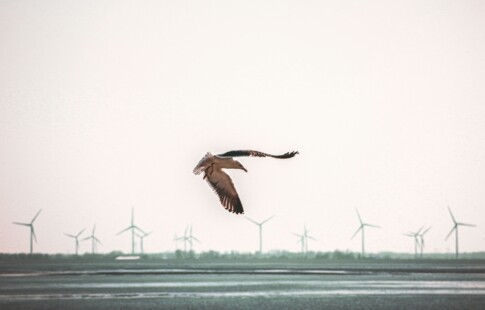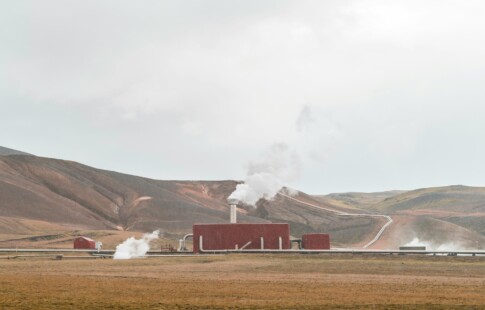
Decoding Wave Energy Advantages and Disadvantages for a Sustainable Future
We are reader-supported. When you buy through links on our site, we may earn affiliate commission.
Coastal communities stand on the front line of climate and energy change. Wave energy promises firm, weather-resilient electricity from the sea’s constant motion, and it complements wind and solar. Investors, regulators, and residents now ask a simple question with complex implications — where, when, and how does wave power make sense?
How Wave Energy Works — The Science in Simple Terms
Ocean waves store energy in moving water. Wave energy converters (WECs) capture and turn part of that motion into electricity. Engineers deploy several designs — point absorbers that bob up and down, attenuators flexing along the wave crests, oscillating water columns that push air through a turbine, and surge devices that swing like a door under wave action. Each design aims to extract useful power while surviving harsh seas.
Think of a WEC like a high-tech buoy with a drivetrain. Waves lift or push it, the device drives a generator, and a cable sends power ashore or to an offshore user. Forecast models and sensors guide operations, so developers tune controls ahead of changing sea states. Those control strategies, plus robust moorings and corrosion-resistant materials, differentiate between a data-buoy experiment and bankable infrastructure. This guide explores wave energy advantages and disadvantages to better understand how it affects communities.
The Advantages of Wave Energy
Wave resources show strong regional patterns, and technology maturity varies by design. Still, distinct strengths keep wave energy in serious clean-power planning, especially for islands, remote grids, and coasts with heavy wave climates.
1. Renewable and Abundant Resource
Developers chase “resource + access.” To generate electricity from waves, projects need access to waves — lots of them. Scotland offers a textbook example. The north and west coasts face long-fetch North Atlantic swells, while the east coast often sees strong winds and large waves in autumn and winter. That exposure creates significant wave power density along the Hebrides, Orkney, and Shetland.
Global analyses reinforce the point. A 70-year dataset shows the belt between 30°S and 60°S contributes roughly 52.3% of global wave power, with the South Pacific, South Atlantic, and Indian Ocean following as major contributors. Those patterns help planners pick winning sites, sequence pilots, and design devices for prevailing sea states.
2. Predictability and Consistency
Wave conditions follow synoptic weather and seasonal trends, and near-term forecasts track storm systems with high skill. Recent research shows wave power often yields better day-ahead predictability than wind at the same site, which reduces balancing costs and smooths grid operations when paired with wind and solar. Grid planners value this predictability because it lowers reserve needs and curbs curtailment.
3. Low Carbon Footprint
Life cycle assessments (LCAs) indicated that well-designed WEC arrays can deliver low carbon intensities across materials, installation, operations, and decommissioning. New LCAs published in 2024-2025 compare point-absorber and surge devices and report competitive greenhouse-gas footprints for pre-commercial systems, with design choices — steel mass, foundations, maintenance logistics — driving the spread. As manufacturing scales and control strategies improve, LCAs project further reductions.
4. Supports Coastal and Remote Communities
Wave energy can power islands, aquaculture sites, and desalination systems without diesel. The U.S. Water Power Technologies Office funds open-water testing to push WECs toward commercial readiness and field validation — a step that benefits small grids and coastal industries.
5. Blue Economy Synergies
Mariculture, ocean observation, and offshore data centers all need reliable, local energy. Wave devices can co-locate with these uses, reduce fuel logistics, and share infrastructure such as moorings and subsea cables. European programs — through EMEC in Orkney and initiatives like WEDUSEA — frame these synergies as part of future coastal jobs and supply chains.
A note on ocean context: The ocean acts as a climate buffer. Scientific agencies report that the ocean absorbs more than 90% of excess heat, and global surface temperatures have risen about 0.18°C (0.32°F) per decade since the early 1980s. That backdrop elevates every low-carbon kilowatt produced near load, including from waves.
The Disadvantages and Challenges of Wave Energy
Developers face real hurdles — capital costs, reliability at sea, environmental diligence, and permitting. Most challenges shrink with learning, but each demands attention in business plans and public policy.
1. High Initial Costs and Investment Risks
Early deployments cost more than mature wind and solar. Developers finance custom prototypes, offshore construction, and specialized vessels. Public funding tries to de-risk this phase. In the U.S., WPTO opened an up to $112.5 million opportunity in 2024 for open-water wave testing — capital that helps teams bridge the “valley of death” from tank to ocean.
2. Technical and Engineering Barriers
Sea states bend metal and test materials. Devices must endure storms, biofouling, and corrosion while maximizing energy capture. TEAMER, a national network of test facilities and experts, gives developers low-cost access to labs, numerical tools, and open-water sites to accelerate design-build-test cycles. Recent TEAMER calls funded dozens of technical support projects — from controls to survivability.
3. Environmental and Ecological Concerns
Agencies and researchers track potential stressors — noise, electromagnetic fields, habitat changes, entanglement risk, and changes in local flow. The OES-Environmental/Tethys evidence base shows limited impacts for small numbers of devices, while it still flags the need for site-specific monitoring and adaptive management as arrays scale. Regulators in the U.S. use established processes, including consultations on Essential Fish Habitat, to protect marine life during permitting.
4. Regulatory and Permitting Hurdles
In U.S. federal waters, BOEM manages offshore research leases like PacWave South off Oregon, while the Federal Energy Regulatory Commission (FERC) licenses hydrokinetic pilots that connect to the grid. Those processes ensure environmental review, stakeholder input, and engineering rigor. They also add time and cost. Clearer guidance, pilot-specific pathways, and “risk retirement” approaches help, but developers still plan multi-year timelines.
5. Limited Testing and Infrastructure
Grid-connected test berths remain scarce. PacWave South will provide four offshore berths, subsea cables, and an onshore facility to validate full-scale devices, but most regions lack similar infrastructure. Without it, companies struggle to prove bankability. Scotland’s EMEC and Spain’s Biscay platforms offer European options — expanding that model elsewhere will speed commercialization.
Frequently Asked Questions About Wave Energy
Wave energy raises practical themes — resource potential, marine safety, costs, and timelines. Concise answers cut through hype, equip coastal residents and investors to make informed decisions, and point to credible next steps.
Is wave energy the same as tidal energy?
No. Wave energy captures power from wind-driven surface waves, while tidal energy taps predictable, gravitational currents that rise and fall with the moon and sun. They use different devices, resource maps, and grid strategies.
What do day-to-day operations and maintenance look like offshore?
Teams run condition-based maintenance. They track bearings, seals, and moorings with sensors, schedule vessel trips around weather windows, and retrieve modules to shore when heavy work, certification checks, or firmware upgrades require it.
Can wave projects co-locate with offshore wind and share infrastructure?
Yes. Developers can share export cables, substations, and service vessels, and they can smooth output by pairing wind’s peak generation with wave’s delayed swell energy. Port upgrades and cable capacity planning make or break these hybrids.
How far from shore — and how deep — do most wave designs operate?
Pre-commercial systems typically sit a few kilometers offshore in tens of meters of water — where waves carry strong energy and ports remain within a practical service range. Deep-water concepts exist, but today’s logistics favor moderate depths, short transits, and proven mooring layouts.
What happens to wave energy structures during extreme storms or equipment faults?
Designers build in ride-through and fail-safe modes that shed load, lock mechanisms, or submerge components. After the storm window closes, crews inspect lines, connectors, and hulls, replacing sacrificial parts before returning to normal operations.
What does community benefit look like beyond jobs?
Ports hire marine technicians, riggers, electricians, and corrosion specialists. Communities benefit from survey work, environmental monitoring, and long-term roles that anchor high-quality coastal employment. Beyond that, developers fund harbor improvements, training programs, and scholarship or apprenticeship pipelines. Some projects offer community-ownership stakes or energy-bill credits that keep value in the host towns.
Build an Always-On Coastal Grid
Wave energy will not replace wind and solar — it strengthens them. Grid operators want clean, forecastable power at the edges of the system. Policymakers can unlock that value by funding ocean testbeds, standardizing hardware and procedures, and backing fair, science-driven permitting. The ocean already shields society by absorbing most excess heat — coastal grids can return the favor by tapping waves for resilient, local power.
Share on
Like what you read? Join other Environment.co readers!
Get the latest updates on our planet by subscribing to the Environment.co newsletter!
About the author

Jane Marsh
Starting from an early age, Jane Marsh loved all animals and became a budding environmentalist. Now, Jane works as the Editor-in-Chief of Environment.co where she covers topics related to climate policy, renewable energy, the food industry, and more.





